So here's a nice selection of information From ADSK on Revit 2010. If you open these in other windows (in your browser) your surfing will be much easier... Cheers, -J
Detailed Features
Autodesk® Revit® Architecture software helps you gain a competitive advantage with tools that help keep all your design information better coordinated and more accurate.
New Conceptual Design Tools
Autodesk Revit Architecture software offers new easy-to-use conceptual design tools that support your creative flow. Sketch freely, create free-form models easily, and manipulate forms interactively. You can define forms and geometry as real building components for a smooth transition to design development and documentation. As you design, Autodesk Revit Architecture automatically builds a parametric framework around your forms, offering greater levels of control, accuracy, and flexibility. Take your design from concept model all the way to construction documents all in one environment.
|
Streamlined User Interface
Autodesk Revit Architecture 2010 software features a sleek, new user interface that offers better desktop organization, a larger drawing window, and quick access to the tools and commands you need. You’ll be able to find your favorite tools faster, locate lesser-used tools more efficiently, and discover new features more easily.
|
Bidirectional Associativity
A change anywhere is a change everywhere. In Autodesk Revit Architecture software, all model information is stored in one place. As a result, any information that gets changed is effectively changed throughout the model. |
Schedules
Schedules are just another view of the Autodesk Revit Architecture model. A change to a schedule view is automatically reflected in every other view. Functionality includes associative split-schedule sections and selectable design elements via schedule views, formulas, and filtering. |
Parametric Components
Parametric Components, also known as families, are the basis for all building components designed in Autodesk Revit Architecture. They offer an open, graphical system for design thinking and form making as well as an opportunity to express design intent at increasingly detailed levels. Use Parametric Components for the most elaborate assemblies, such as cabinetry and equipment, as well as for the most elementary building parts, such as walls and columns. Best of all, no programming language or coding is required. |
Design Options
Develop and study multiple simultaneous design alternatives to make key design decisions. Present multiple schemes to your clients easily. Substitute each option into the model for visualization, quantification, and other data analysis to better inform decision making. |
Detailing
Take advantage of the extensive detail library and detailing tools that are part of Autodesk Revit Architecture 2010. Presorted to align with the CSI format, detail libraries can be tailored to accommodate your office standards. Create, manage, and share your own detail library. |
Material Takeoff
Calculate detailed material quantities with this new tool. Appropriate for sustainable design and checking material quantities in cost estimates, Material Takeoff facilitates the tracking of material quantities. The parametric change engine helps ensure that your material takeoffs are accurate. |
Revit Building Maker
The Revit Building Maker feature provides a seamless way to turn conceptual forms into functional designs. Select faces to generate walls, roofs, floors, and curtain systems. Use tools to extract important information about your building such as surface area or volume per floor. Conceptual forms may be created natively in Autodesk Revit Architecture or imported from applications such as AutoCAD®, form-Z, Rhino, Google SketchUp, or other ACIS- or NURBS-based applications into Autodesk Revit Architecture software as mass objects. |
Interference Check
Use interference checking to scan your model for collisions between elements. |
Design Visualization
Capture design ideas in a photorealistic state. With easy user interaction, high-quality output, and faster render times, the mental ray® rendering engine enables superior design presentation. For more granular control over the rendered scene, use the Autodesk® FBX® file format to import your designs into Autodesk® 3ds Max® Design software. You’ll get unmatched flexibility and control over how you visualize and present your work. Learn more about design visualization. |
Native 64-bit Support
New native 64-bit support enhances Autodesk Revit Architecture’s ability to handle large projects and improves performance and stability for memory-intensive tasks such as rendering, printing, model upgrading, and file importing and exporting. |
Enhanced Interoperability
Interoperability enhancements enable you to work more efficiently with members of your extended project team. Now you can export your building model or site, complete with critical metadata, to AutoCAD® Civil 3D® software. And you can import accurate models from Autodesk® Inventor® 3D mechanical design software. |
Autodesk 2D and 3D DWF Integration
Autodesk Revit Architecture software supports complete round-tripping of markups with Autodesk® Design Review software. Because Autodesk Design Review software’s markup capabilities combine with Autodesk Revit Architecture navigation and revision management capabilities, tracking changes is easy. There’s no need to re-enter information. Autodesk Revit Architecture supports publishing a model to 2D or 3D DWF™ format. This capability provides high-impact, dynamic communication of design information in a lightweight format. It’s great for including nontechnical participants in the project review process.  FAQ (pdf - 173Kb) FAQ (pdf - 173Kb)
|

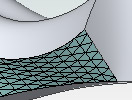

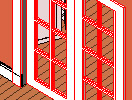
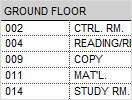
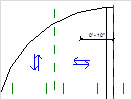
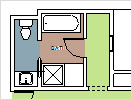
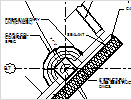
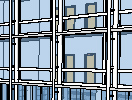
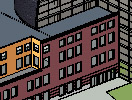
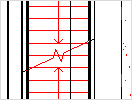
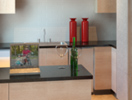

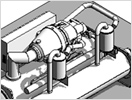
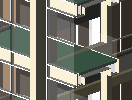
No comments:
Post a Comment